January 30 is:
National Inane Answering Message Day
National Croissant Day
1661 – Oliver Cromwell, Lord Protector of the Commonwealth of England was ritually executed two years after his death, on the anniversary of the execution of the monarch he himself deposed.
According to Wikipedia:
Cromwell died on Friday, 3 September 1658. On 30 January 1661, (the 12th anniversary of the execution of Charles I), Cromwell’s body was exhumed from Westminster Abbey, and was subjected to the ritual of a posthumous execution, as were the remains of Robert Blake, John Bradshaw and Henry Ireton…. His disinterred body was hanged in chains at Tyburn, and then thrown into a pit. Cromwell’s severed head was displayed on a pole outside Westminster Hall until 1685. Afterwards it allegedly was owned by various people and was publicly exhibited several times. Afterwards, the head changed hands several times, including its sale in 1814 to Josiah Henry Wilkinson, before eventually being buried beneath the floor of the antechapel at Sidney Sussex College, Cambridge, in 1960. The exact position was not publicly disclosed…
However, many people began to question whether or not the body mutilated at Tyburn was in fact that of Cromwell. These doubts arose because it was assumed that between his death in September 1658 and the exhumation of January 1661, Cromwell’s body was buried and reburied in several places to protect it from vengeful royalists. The stories suggest that his bodily remains are buried in London, Cambridgeshire, Northamptonshire or Yorkshire. It continues to be questioned whether the body mutilated at Tyburn was in fact that of Oliver Cromwell.
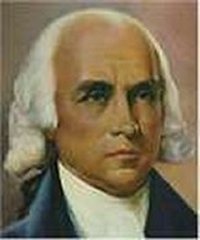 Publication of Federalist Paper #47: The Particular Structure of the New Government and the Distribution of Power Among Its Different Parts written by James Madison in 1788. It was argued that there must be total separation between the branches of government per writings by Montesquieu. Madison concludes by implying Montesquieu did not mean there had to be total separation of distinct branches of government only that the same person or group could not directly control the actions of more than one branch. Madison considers separation of powers to provide “checks and balances”. He examines the state constitutions and finds that none have absolute separation of the branches.
Publication of Federalist Paper #47: The Particular Structure of the New Government and the Distribution of Power Among Its Different Parts written by James Madison in 1788. It was argued that there must be total separation between the branches of government per writings by Montesquieu. Madison concludes by implying Montesquieu did not mean there had to be total separation of distinct branches of government only that the same person or group could not directly control the actions of more than one branch. Madison considers separation of powers to provide “checks and balances”. He examines the state constitutions and finds that none have absolute separation of the branches.
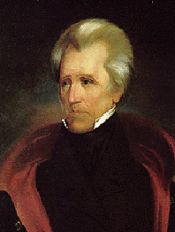 1835 – In the first assassination attempt against a President of the United States, Richard Lawrence, an unemployed house-painter from England, attempted to shoot President Andrew Jackson, but failed and was subdued by a crowd, including several congressmen. He aimed a pistol at Jackson, which misfired. Lawrence pulled out a second pistol, which also misfired. Historians believe the humid weather contributed to the double misfiring. Lawrence was restrained, and legend says that Jackson attacked Lawrence with his cane. Others present, including David Crockett, restrained and disarmed Lawrence.
1835 – In the first assassination attempt against a President of the United States, Richard Lawrence, an unemployed house-painter from England, attempted to shoot President Andrew Jackson, but failed and was subdued by a crowd, including several congressmen. He aimed a pistol at Jackson, which misfired. Lawrence pulled out a second pistol, which also misfired. Historians believe the humid weather contributed to the double misfiring. Lawrence was restrained, and legend says that Jackson attacked Lawrence with his cane. Others present, including David Crockett, restrained and disarmed Lawrence.
In 1847 Yerba Buena, California was renamed San Francisco. (“I left my heart in Yerba Buena” has a pleasant ring to it!)
The first American ironclad warship, the USS Monitor was launched in 1862.
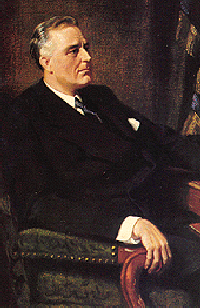 Birthday of Franklin Delano Roosevelt (January 30, 1882), thirty-second president of the United States
Birthday of Franklin Delano Roosevelt (January 30, 1882), thirty-second president of the United States
Adolf Hitler was sworn in as Chancellor of Germany on January 30, 1933.
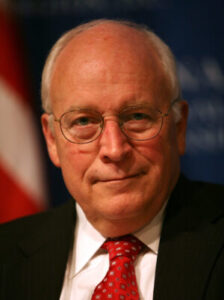 Birthday of Richard Bruce (Dick) Cheney (January 30, 1941), vice-president during the administration of George W. Bush (2001-2009).
Birthday of Richard Bruce (Dick) Cheney (January 30, 1941), vice-president during the administration of George W. Bush (2001-2009).
On January 30, 1948, Indian political and spiritual leader Mahatma Gandhi was murdered by a Hindu extremist.
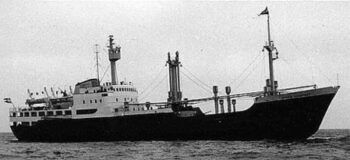 1959 – Danish liner, MS Hans Hedtoft, said to be the safest ship afloat and “unsinkable” like the RMS Titanic, struck an iceberg on her maiden voyage and sank, killing all 95 aboard.
1959 – Danish liner, MS Hans Hedtoft, said to be the safest ship afloat and “unsinkable” like the RMS Titanic, struck an iceberg on her maiden voyage and sank, killing all 95 aboard.
